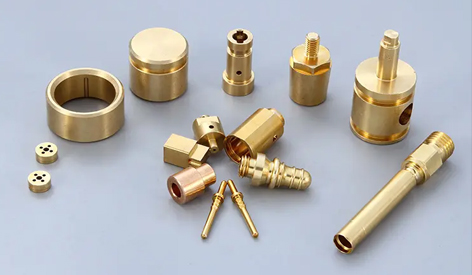Views: 3 Author: Site Editor Publish Time: 2024-04-23 Origin: Site









Introduction
Copper is a versatile metal known for its excellent electrical conductivity, thermal properties, and corrosion resistance. Machining copper presents unique challenges and opportunities due to its inherent characteristics. This technical article delves into the realm of machining copper, focusing on its electrical conductivity, corrosion resistance, machining techniques, surface treatments, and applications across industries.
1. Properties of Copper
· Overview of copper's properties, including high electrical conductivity, thermal conductivity, malleability, and ductility.
· Importance of copper in various industries such as electronics, electrical engineering, automotive, and construction.
2. Machining Techniques for Copper
· Introduction to machining processes suitable for copper, including milling, turning, drilling, and grinding.
· Considerations for tool selection, cutting speeds, feeds, and coolant requirements when machining copper alloys.
3. Electrical Conductivity of Copper
· In-depth discussion on copper's unparalleled electrical conductivity and its significance in electrical and electronic applications.
· Impact of machining processes on copper's electrical properties and measures to maintain conductivity during machining.
4. Corrosion Resistance
· Analysis of copper's natural corrosion resistance, forming a protective oxide layer that enhances durability.
· Strategies for minimizing corrosion during machining, such as proper coolant selection, surface treatments, and protective coatings.
5. Machining Challenges and Solutions
· Challenges faced when machining copper, including tool wear, burr formation, and surface finish issues.
· Techniques to overcome machining challenges, such as using high-speed tools, optimized cutting parameters, and post-machining deburring.
6. Surface Treatments for Copper
· Overview of surface treatment options for copper parts, including plating, passivation, anodizing, and chemical treatments.
· Benefits of surface treatments in enhancing corrosion resistance, aesthetics, and functional properties of copper components.
7. Applications of Machined Copper Parts
· Examples of machined copper parts used in electrical connectors, heat sinks, busbars, RF antennas, plumbing fittings, and artistic sculptures.
· Role of CNC machining in producing intricate copper components with high precision and repeatability.
8. Future Trends and Innovations
· Trends in copper machining technologies, such as automation, AI-driven optimizations, and additive manufacturing.
· Innovations in copper alloys, nanostructured materials, and sustainable machining practices.
Conclusion
Machining copper requires expertise, precision, and attention to detail due to its unique properties and applications. By understanding copper's electrical conductivity, corrosion resistance, machining techniques, and surface treatments, manufacturers can produce high-quality copper components for diverse industries while ensuring reliability, performance, and longevity. As industries evolve and demand for efficient copper solutions grows, continuous innovation and advancements in machining processes will drive the future of copper manufacturing.